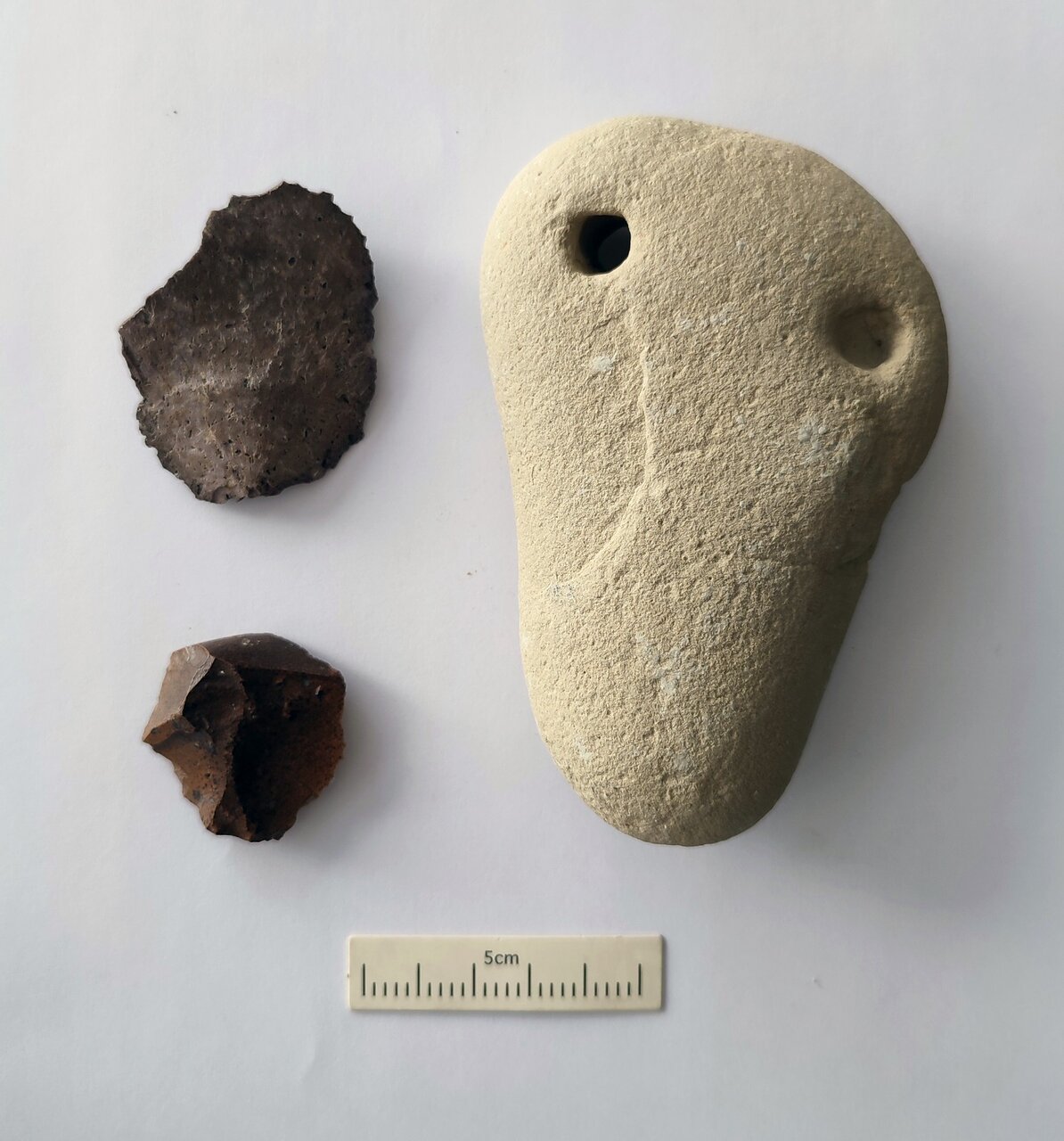Ancient Maritime Mysteries: Archaeologists Discover Evidence of Early Seafaring in Southern Iran
Recent excavations at Iran’s Kopal archaeological site have unveiled artifacts that promise to provide new insights into early maritime practices. While researchers are excited about the discoveries, they emphasize the necessity for further analysis to fully understand their significance.
The excavations yielded a range of fascinating artifacts, including a modified flat pebble featuring holes. This unique find is speculated to be either a fishing weight or a small anchor. It was discovered in proximity to stone flakes that exhibit characteristics typical of the Paleolithic period.
Mortaza Hessari, the head of the excavation team, highlighted the relevance of these findings, stating, “The close association between the holed cobble and stone flakes made with Paleolithic techniques raises important questions about when coastal communities first began utilizing marine resources in this region.” However, he also issued a word of caution, explaining, “While the flakes show typical Paleolithic features, the cobble itself lacks similar weathering patterns, so we must investigate further before drawing conclusions.”
Hessari elaborated on the team’s ongoing efforts and considerations, noting: “We could be looking at genuine Paleolithic maritime activity, or perhaps later communities reusing an ancient landscape. The proximity of 4th-millennium BC pottery found in nearby trenches indicates that this site has a history of long-term coastal use. Yet, we need dating evidence to determine if these activities extend back to the Paleolithic.”
As salvage excavations proceed ahead of road construction, Hessari emphasized the necessity of conducting methodical research. He stated, “We’re conducting microscopic analysis and geological dating to clarify the relationship between these artifacts. Whatever we ultimately discover, this site highlights the Makran coast’s rich—and still poorly understood—maritime heritage.”
The findings from the Kopal archaeological site have ignited interest among scholars focused on early human adaptation to coastal environments. As Hessari noted, “This is just the beginning of a much longer scientific conversation.”
Key points from the excavation include:
- Modified Flat Pebble: Potentially a fishing weight or small anchor.
- Paleolithic Stone Flakes: Indicating the possibility of early maritime resource utilization.
- 4th-Millennium BC Pottery: Suggesting long-term coastal habitation.
- Need for Further Analysis: Ongoing microscopic analysis and geological dating are essential.
- Rich Maritime Heritage: The Makran coast’s history is still largely unexplored.
The significance of these discoveries cannot be understated. They may not only reshape our understanding of early human interaction with marine environments but also open avenues for future research into the maritime practices of ancient communities. The interplay between the modified pebble and the stone flakes underscores a complex relationship between early humans and their coastal surroundings.
As researchers continue their work at the Kopal site, the information gleaned from these artifacts will contribute to a broader understanding of the adaptation strategies employed by ancient peoples in relation to their environment. The implications of these findings could redefine academic perspectives on the emergence of maritime cultures and their evolution over time.
In conclusion, the recent excavations at Iran’s Kopal archaeological site offer a tantalizing glimpse into the past. While the artifacts discovered thus far raise compelling questions about early maritime practices, ongoing research is crucial to uncovering the full story. As more data becomes available, scholars and the public alike eagerly await the insights that will emerge from this significant archaeological endeavor.






